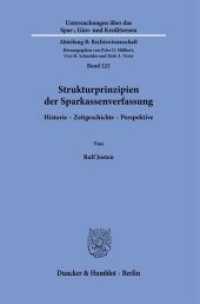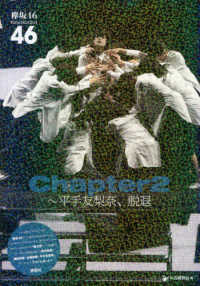- ホーム
- > 洋書
- > 英文書
- > History / World
Full Description
Richard Hakluyt's 12-volume Principal Navigations Voyages Traffiques and Discoveries of the English Nation, originally published at the end of the sixteenth century, and reissued by the Cambridge Library Collection in the edition of 1903-5, was followed in 1625 by Hakluytus Posthumus or, Purchas his Pilgrimes, now reissued in a 20-volume edition published in 1905-7. When first published in four folio volumes, the work was the largest ever printed in England. An Anglican priest, Samuel Purchas (1577-1626) was a friend of Hakluyt, and based his great work in part on papers not published by Hakluyt before his death. As well as being a wide-ranging survey of world exploration, it is notable as an anti-Catholic polemic, and a justification of British settlement in North America. Volume 4 includes retrospective accounts and crews' journals describing voyages to the East Indies.
Contents
Part IV (cont.): 4. Observations of William Finch; 5. The ninth voyage of the Indian Companie; 6. A ruter, or briefe direction for readie sayling into the East India; 7. A journall of the tenth voyage to the East India; 8. Certaine observations written by others employed in the same voyage; 9. The eleventh voyage to the East India; 10. A journall of all principall matters passed in the twelfth voyage to the East India; 11. Extracts from the journall of Captaine Nicholas Downton; 12. Relations of Master Elkington and Master Dodsworth, touching the former voyage; 13. A journall of the journey of Richard Steel, and John Crowther; 14. Memoirs of a voyage by John Milward; 15. The second voyage of Captaine Walter Peyton; 16. Observations collected out of the journall of Sir Thomas Roe; 17. A letter of Master Thomas Coryat; Part V: 1. The journall of Roger Hawes; 2. The journall of Alexander Childe; 3. A letter of Master Thomas Spurway; 4. A large journall of a voyage, set forth by the East Indian Societie; 5. The voyage of the Anne Royall from Surat to Moha; 6. Brief notes of two voyages of Master Martin Pring into the East Indies.








